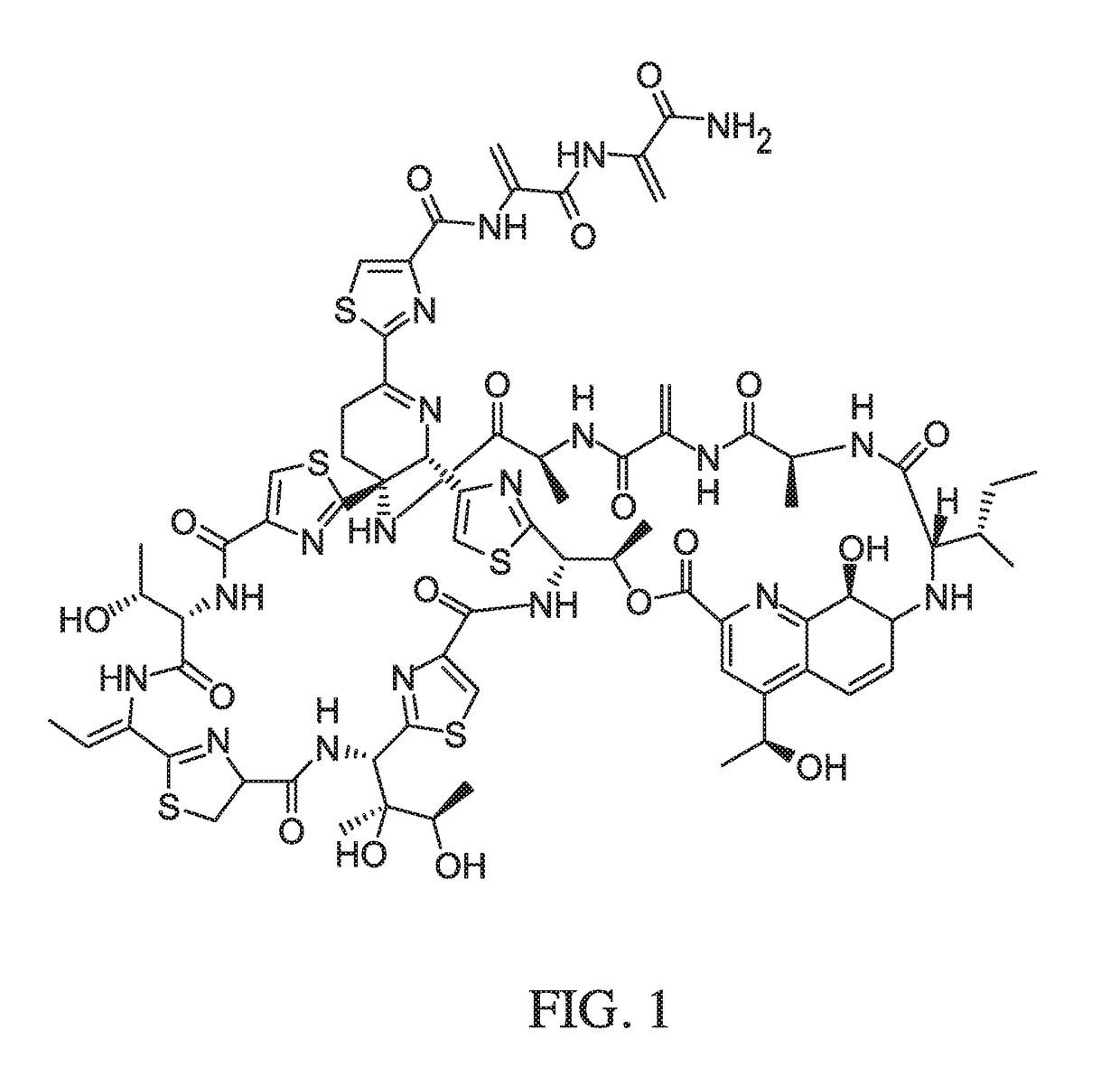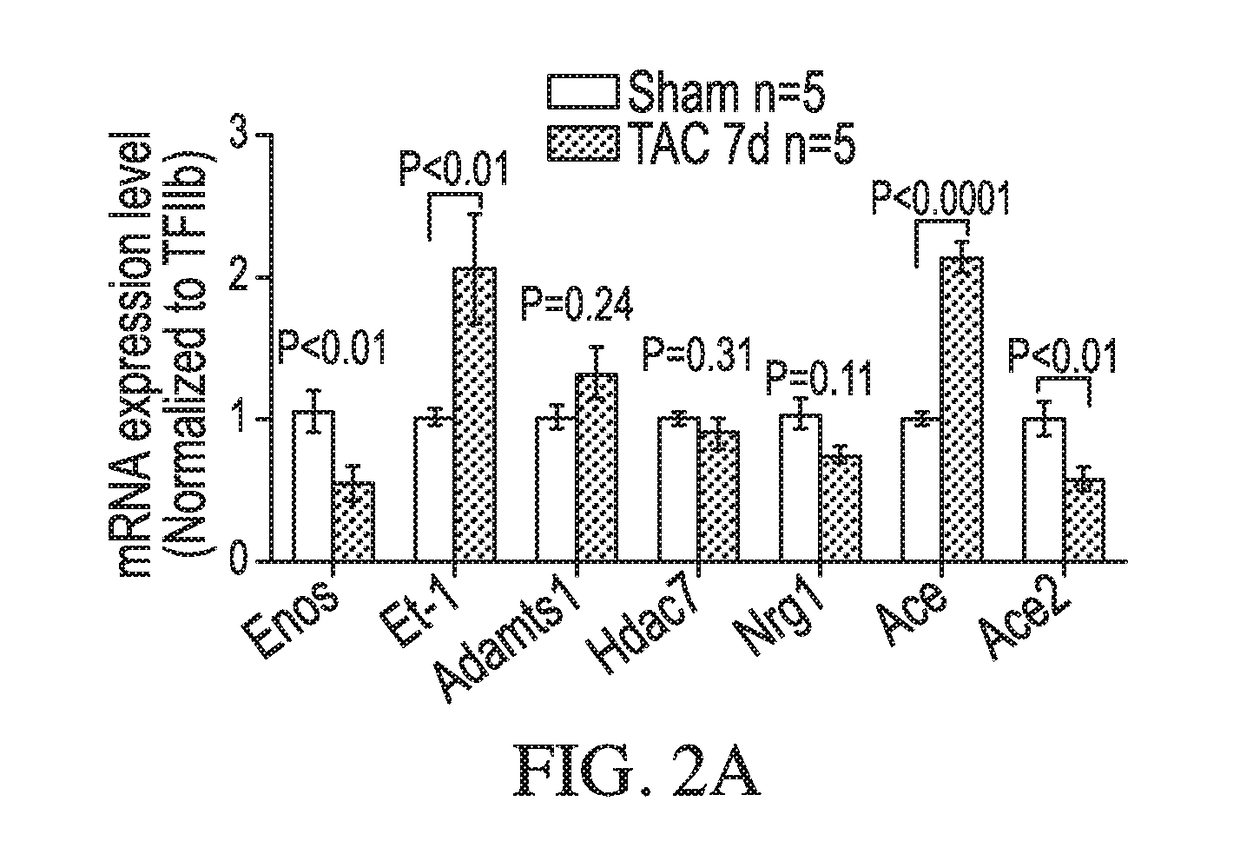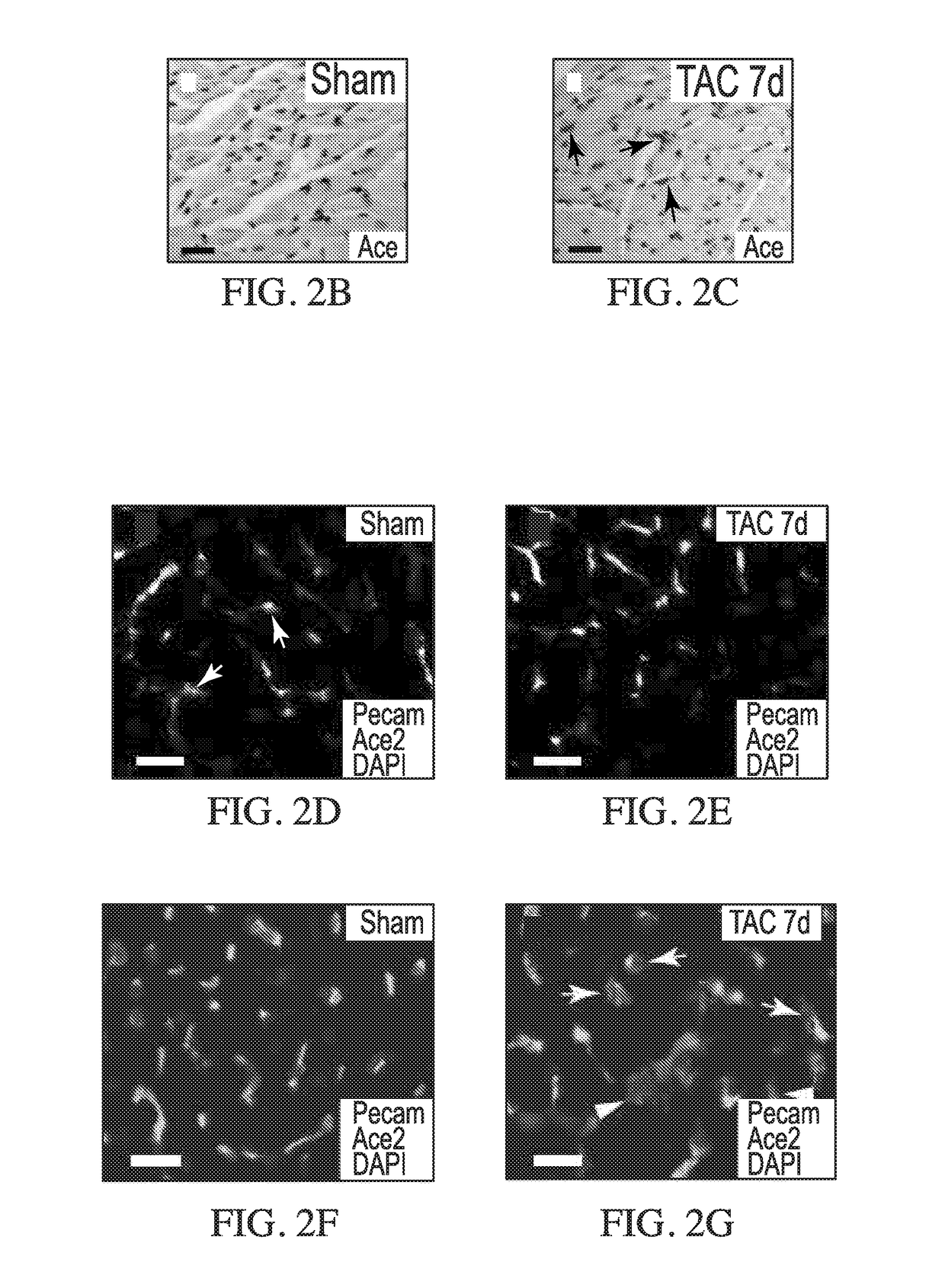Antithetical regulation of endothelial ace and ace2 by brg1-foxm1 complex underlies pathological cardiac hypertrophy
an anti-inflammatory and endothelial technology, applied in the direction of cyclic peptide ingredients, etc., can solve the problems of cardiac hypertrophy and failure, etc., to prevent, reduce, and treat hypertrophy and heart failure, and increase the production of angiotensin ii.
- Summary
- Abstract
- Description
- Claims
- Application Information
AI Technical Summary
Benefits of technology
Problems solved by technology
Method used
Image
Examples
example 1
[0116]In this Example, endothelial factors that are mis-regulated by cardiac pressure stress were analyzed.
[0117]Particularly, by using reverse transcription and quantitative polymerase chain reaction (RT-qPCR), the expression of cardiac endothelial factors in the left ventricle with or without transaortic constriction (TAC) were examined. These factors included eNos, Et-1, Adamts1, Hdac7, Nrg1, ACE and ACE29. Within 7 days after TAC, Et-1 and ACE were induced 2.0- and 2.9-fold in left ventricles, whereas Enos and ACE2 were reduced by 46% and 48% (FIG. 2A). Adamts1, Hdac7, and Nrg1 had no significant changes. The regulation of ACE and ACE2, which encode secreted enzymes that counter each other to regulate the amount of angiotensin 2 that is critical for cardiovascular function, were focused on.
[0118]Prior to the present disclosure, it was unknown how ACE and ACE2 were regulated in the heart. Using immunostaining to further assess the regulation of ACE and ACE2 by cardiac stress, it ...
example 2
[0120]In this Example, the antithetical regulation of ACE and ACE2 in the endothelium of stressed hearts was examined.
[0121]One important mechanism of gene regulation is through chromatin remodeling. By immunostaining, it was observed that Brg1, a crucial ATP-dependent chromatin-remodeling factor, was expressed at a low level in endothelial cells of healthy adult hearts (FIG. 2F). However, the expression of Brg1 was highly activated by TAC in cardiomyocytes and cardiac endothelial cells (FIGS. 2G, 2H, and 2I). It was previously shown that activation of Brg1 in cardiomyocytes is essential for cardiomyopathy to develop (Hang et al., “Chromotin regulation by Brg1 underlies heart muscle development and disease,” Nature 466, 62-67 (2010); Han et al., “A long non-coding RNA protects the heart from pathology hypertrophy,” Nature in Press (2014)), but the role of stress-activated Brg1 in cardiac endothelial cells remains unknown.
[0122]Given that Brg1 represses α-MHC (Myh6) and activates β-M...
example 3
[0124]In this Example, as angiogenesis underlies cardiac hypertrophy and failure, cardiac vessel density was examined to test if endothelial Brg1 was essential for vascular supply in stressed hearts. By PECAM staining, no difference was found in the vessel density of control and SclCreERT; Brg1f / f hearts treated with tamoxifen and TAC (FIGS. 4A-4D). This suggests that endothelial Brg1 does not regulate cardiac hypertrophy through angiogenesis.
[0125]Given the role of Ace and Ace 2 in cardiomyopathy, endothelial Brg1 was tested to determine if it was essential for the dynamic changes of Ace and Ace2 in stressed hearts. By RT-qPCR, the expression of eNos, Et1, Adamts1, Hdac7, Nrg1, Ace and Ace 2 was examined in tamoxifen-treated control and SclCreERT; Brg1f / f hearts with or without TAC. Among these genes and after 7 days of TAC, the opposite changes of Ace and Ace 2 were evident in the stressed hearts of control mice, with TAC increasing Ace / Ace2 ratio by 4.5-fold (FIG. 5A). However, t...
PUM
| Property | Measurement | Unit |
|---|---|---|
| pressure | aaaaa | aaaaa |
| pressure | aaaaa | aaaaa |
| pathological stress | aaaaa | aaaaa |
Abstract
Description
Claims
Application Information
 Login to View More
Login to View More - R&D
- Intellectual Property
- Life Sciences
- Materials
- Tech Scout
- Unparalleled Data Quality
- Higher Quality Content
- 60% Fewer Hallucinations
Browse by: Latest US Patents, China's latest patents, Technical Efficacy Thesaurus, Application Domain, Technology Topic, Popular Technical Reports.
© 2025 PatSnap. All rights reserved.Legal|Privacy policy|Modern Slavery Act Transparency Statement|Sitemap|About US| Contact US: help@patsnap.com



